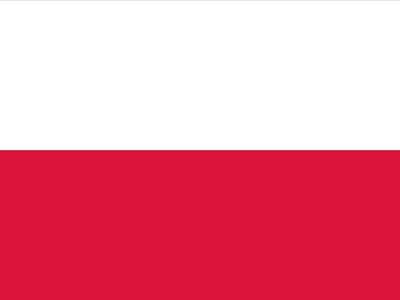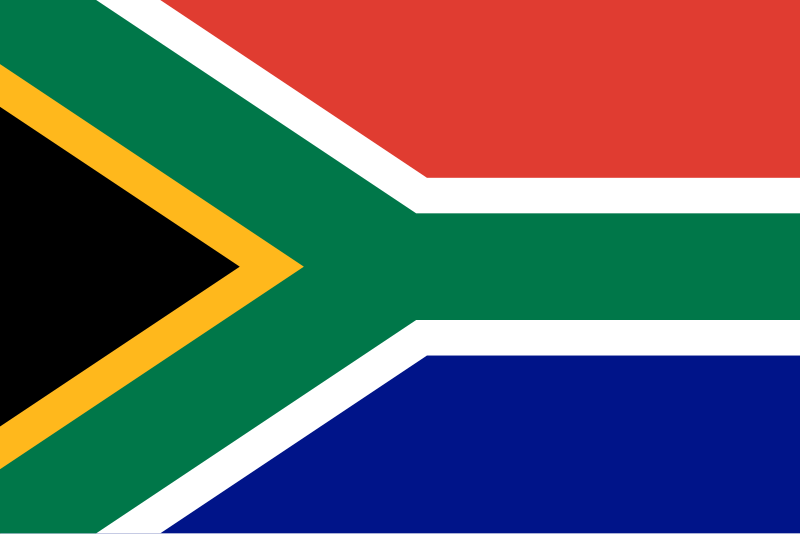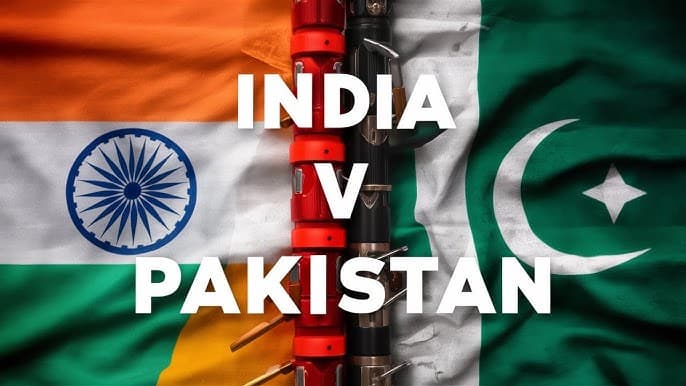
Navigating YouTube Monetization in Poland: Opportunities and Challenges
summary
YouTube Monetization in Poland refers to the process by which content creators in Poland generate revenue from their YouTube channels through advertising, sponsorships, memberships, and other monetization tools. Governed by both YouTube's global policies and regional regulations, including the European Union's Audiovisual Media Services Directive (AVMSD), monetization in Poland requires creators to adhere to strict content guidelines, particularly those aimed at protecting minors and ensuring advertiser-friendly content[1][2][3]. As of 2023, YouTube has updated its monetization requirements, making it easier for creators to qualify for the YouTube Partner Program (YPP) while introducing new features like YouTube Shorts to cater to evolving viewer preferences[4][5][6].
The platform has become a significant economic driver in Poland, contributing approximately '98 million to the country's GDP in 2020 and supporting 11,000 full-time equivalent jobs[7]. Polish creators, such as Wersow and Bazylland, have achieved remarkable success, building large audiences and generating substantial income through diversified revenue streams like ad revenue, channel memberships, and brand deals[8][9]. However, challenges such as internet connectivity issues, content regulation, and navigating Poland's complex tax system continue to pose hurdles for creators[10][11].
YouTube's influence extends beyond economics, shaping Poland's cultural landscape by amplifying local talent and connecting Polish creators with global audiences. The platform's monetization tools, combined with its global reach, have enabled Polish YouTubers to explore innovative content formats and expand their businesses[12][13]. Despite these opportunities, the competitive nature of the platform and evolving regulatory frameworks, such as the EU's Digital Directive, require creators to remain adaptable and resilient[14][15].
Looking ahead, the future of YouTube monetization in Poland is poised for growth, driven by technological advancements, increasing brand expenditure on influencer marketing, and YouTube's ongoing efforts to expand monetization features. However, creators must navigate ongoing challenges, including regulatory changes and market fluctuations, to sustain and grow their channels in this dynamic digital ecosystem[16][17].
Overview
YouTube monetization in Poland is governed by both global platform policies and regional regulations, including those influenced by the European Union's Audiovisual Media Services Directive (AVMSD). The AVMSD, revised in 2018, aims to ensure media services contribute to equality, accessibility, and the protection of minors, which indirectly impacts content creation and monetization on platforms like YouTube[1][2]. For instance, content creators in Poland must adhere to guidelines that provide sufficient information about content that may impair minors' development, often through visual symbols broadcasted before or during programs[3].
As of 2023, YouTube has updated its monetization requirements, reflecting changes in viewer preferences, platform policies, and global digital trends[4][5]. These updates include stricter rules for content eligibility, ensuring that creators meet specific criteria to qualify for ad revenue[6]. Despite these opportunities, Polish YouTubers face challenges such as internet connectivity issues, content regulation, and monetization hurdles[7].
Poland is among the countries where YouTube monetization is available, allowing advertisers to target Polish audiences through the platform[8][9]. This availability provides Polish content creators with opportunities to monetize their channels, though they must navigate both YouTube's global policies and EU-specific regulations to succeed in the competitive digital landscape.
History of YouTube Monetization in Poland
YouTube monetization in Poland has evolved significantly since the platform's inception in 2005. Initially, YouTube served as a simple video-sharing platform, but it quickly transformed into a viable career option for content creators through the introduction of monetization features. The YouTube Partner Program (YPP), launched globally, became a cornerstone for creators in Poland to earn revenue from their content through ads, memberships, and other monetization tools[10][11].
Early Years and AdSense Integration
In its early years, YouTube's monetization model relied heavily on Google AdSense, which allowed creators to earn revenue by displaying ads on their videos. Polish creators had to set up a Google AdSense account and link it to their YouTube channels to begin monetizing their content[12]. This integration marked the beginning of YouTube's transition from a video-sharing platform to a revenue-generating ecosystem for creators in Poland.
Growth and Challenges
Despite the growing popularity of YouTube in Poland, creators faced several challenges, including internet connectivity issues, content regulation, and monetization hurdles[7]. The platform's monetization policies required creators to adhere to strict community guidelines and copyright regulations, ensuring that their content aligned with YouTube's standards[13]. Additionally, Poland's media regulations, such as the requirement to display visual symbols for content that may impair minors' development, added another layer of complexity for creators[3].
Expansion of Monetization Features
Over the years, YouTube introduced new monetization features to enhance creators' earning potential. In 2020, the launch of YouTube Shorts provided Polish creators with an opportunity to monetize short-form content, catering to the growing demand for quick, engaging videos[14]. Interactive and video content, such as shoppable videos and gamified experiences, also emerged as key formats, driving higher engagement and monetization opportunities[15].
Recent Developments and Revenue Trends
In 2023, YouTube announced updates to its monetization policies, introducing new requirements and features for creators in Poland[16][17]. These changes aimed to align with global trends and improve the platform's revenue-sharing model. According to data, the value of AdSense monthly revenues from YouTube in Poland showed steady growth from 2017 to 2021, reflecting the platform's increasing popularity and monetization potential[18]. By December 2023, the monthly YouTube app revenue in Poland reached significant figures, further highlighting the platform's financial impact in the region[19].
Monetization Policies and Requirements
To monetize content on YouTube in Poland, creators must adhere to the platform's monetization policies and meet specific eligibility criteria under the YouTube Partner Program (YPP). These requirements ensure that creators produce high-quality, advertiser-friendly content while maintaining compliance with YouTube's community guidelines and copyright standards[20][11].
Eligibility Criteria
To join the YouTube Partner Program, creators must meet one of two qualification paths: the Standard YPP Path or the Shorts-Focused Path. For the Standard YPP Path, creators need at least 1,000 subscribers and either 4,000 watch hours in the past 12 months or 10 million valid public Shorts views in the last 90 days[13][21]. However, in 2023, YouTube lowered these thresholds in some regions, allowing creators with 500 subscribers, 3,000 watch hours, or 3 million Shorts views to qualify[21][22].
Additionally, creators must comply with YouTube's monetization policies, which include having no active Community Guidelines strikes and adhering to advertiser-friendly content guidelines[13][23]. Channels must also be reviewed by YouTube to ensure they meet quality and engagement standards before being admitted to the program[13][11].
Monetization Tools and Features
Once accepted into the YPP, creators gain access to various monetization tools, including ad revenue sharing, Super Thanks, Memberships, and the Merch Shelf[20][10]. These features enable creators to diversify their income streams beyond traditional ad revenue. However, not all videos on a channel may be eligible for ads, as YouTube's automated systems and reviewers assess content for compliance with advertiser-friendly guidelines[23].
Content Restrictions and Protections
YouTube enforces strict measures to protect minors and ensure content safety. Harmful content, such as gratuitous violence or pornography, is subject to the strictest restrictions, and product placement is prohibited in children's programming[24][25]. These rules align with broader EU regulations on audiovisual media services, which aim to safeguard minors and promote high-quality content[25].
Challenges and Opportunities
While the YPP offers significant opportunities for creators, the monetization thresholds can be a barrier for new or small channels[26]. However, the 2023 updates to the YPP requirements have made it easier for more creators to qualify, particularly those focusing on Shorts[21][22]. By adhering to YouTube's policies and leveraging its monetization tools, creators in Poland can turn their content into a sustainable income stream[11][27].
Revenue Streams for Polish Creators
Polish creators on YouTube have access to multiple revenue streams, enabling them to monetize their content effectively. These include advertising revenue, channel memberships, sponsorships, and other innovative strategies tailored to the platform's evolving ecosystem.
Channel Memberships and Super Chat
Polish creators can also monetize their channels through memberships and Super Chat features. Channel memberships allow fans to pay a monthly fee for exclusive perks, such as badges and access to members-only content[28]. Super Chat and Super Stickers, on the other hand, enable viewers to pay for highlighted messages during live streams, providing an additional revenue stream for creators who engage actively with their audience[29].
Sponsorships and Brand Deals
Sponsorships have become a cornerstone of the creator economy, offering Polish YouTubers opportunities to collaborate with brands. These partnerships often involve promoting products or services through dedicated videos, mentions, or creative integrations within content[30]. Sponsorship payouts vary widely, depending on factors such as the brand's budget, the creator's reach, and the engagement rate of their audience[31]. Smaller creators can start with affiliate sponsorships, where they share affiliate codes to earn commissions, while larger channels may secure more lucrative deals through influencer marketing platforms[32][33].
Advertising Revenue
Advertising remains one of the primary sources of income for YouTube creators in Poland. Through the YouTube Partner Program (YPP), creators can earn money from ads displayed on their videos. To qualify, creators must meet specific eligibility requirements, including 1,000 subscribers and 4,000 watch hours or 10 million Shorts views in the last 12 months[34]. Earnings from ads depend on factors such as ad views, viewer demographics, and advertiser bids, with YouTube retaining 45% of the revenue[35]. In Poland, the average CPM (cost per mille) rates can vary significantly based on audience type, niche, and content relevance, with technology channels often earning higher rates than gaming or entertainment channels[36]. Historical data shows that AdSense revenues from YouTube in Poland have fluctuated over the years, reflecting broader trends in the digital advertising market[18].
Diversification of Revenue Streams
Beyond traditional monetization methods, Polish creators are increasingly exploring alternative revenue streams. These include selling merchandise, offering online courses, and leveraging platforms like Thinkific to create paid content for their subscribers[37][38]. Additionally, interactive and video content formats, such as shoppable videos and gamified experiences, are gaining traction as effective tools for driving engagement and monetization[15].
Regulatory Framework and Discoverability
Polish creators must also navigate the country's regulatory framework, which includes the Act of 14 May 2020. This legislation mandates that 1.5% of subscription or advertising fees, whichever is higher, based on annual revenue earned in Poland, be allocated to the Polish Film Institute[39]. Furthermore, the Broadcasting Act requires that at least 30% of content promoted on platforms like YouTube be EU titles, including Polish productions, ensuring discoverability and support for local creators[39]. These regulations, combined with the AVMSD (Audiovisual Media Services Directive), influence how influencers operate and the quality of content they provide[40].
Challenges Faced by Polish Creators
Polish creators on YouTube face a unique set of challenges, ranging from technical and financial hurdles to navigating the evolving legal and cultural landscape. One of the primary obstacles is the lack of resources and funding for artists in Poland, exacerbated by the dominance of conservative politics in many funding bodies and cultural institutions[41]. This underdeveloped cultural infrastructure makes it difficult for creators to access the support they need to grow their channels and produce high-quality content.
New creators, in particular, encounter significant difficulties in building an audience and mastering the technical aspects of video production. From finding their niche and developing a unique voice to engaging viewers and retaining a loyal audience, the journey can be daunting[42]. Additionally, the competitive nature of YouTube requires creators to stay updated on platform algorithms, SEO strategies, and audience preferences to remain relevant[38].
Monetization also presents challenges, as creators must navigate Poland's complex tax system. Income from YouTube is subject to taxation, and creators must choose between different tax forms, such as the tax scale, lump sum on recorded income, or flat tax basis[43]. Recent changes to Polish tax laws, including the implementation of the "slim VAT 3" package, have introduced new verification obligations for tax remitters, adding another layer of complexity for creators[44].
Furthermore, the introduction of the EU's Digital Directive into Polish law in 2023 has significantly impacted the rules for supplying digital content and services, requiring creators to adapt to new legal frameworks[45][46]. These changes, while aimed at modernizing the digital landscape, can create additional administrative burdens for creators.
Despite these challenges, the growing popularity of influencer marketing in Poland offers opportunities for creators to collaborate with brands and increase their revenue streams[47]. However, fluctuating YouTube market shares and varying CPM rates in Poland mean that creators must remain adaptable and resilient to maximize their earnings[48][49].
Success Stories
YouTube monetization has enabled numerous Polish creators to achieve remarkable success, transforming their channels into thriving businesses and making a significant impact on Poland's digital economy.
Wersow: A Rising Star
Wersow, a 27-year-old dancer and social media influencer, has become one of Poland's most prominent YouTubers. With 2.69 million subscribers, her channel features a mix of lifestyle vlogs, dance performances, and personal moments that resonate deeply with her audience. Her success on YouTube has not only earned her a net worth of $1.5 million but also solidified her position as a leading figure in Poland's creator economy[50].
Bazylland: Leading the Pack
As of September 2024, Bazylland holds the title of the most-subscribed Polish YouTube channel, boasting 7.27 million subscribers. This channel's success highlights the potential for Polish creators to build massive followings and generate substantial income through YouTube's monetization features[51].
Economic Impact of Polish Creators
Polish YouTubers collectively contribute significantly to the country's economy. A 2020 study estimated that YouTube's creative ecosystem contributed approximately '98 million to Poland's GDP and supported 11,000 full-time equivalent jobs[52]. This economic impact underscores the platform's role in fostering entrepreneurship and job creation in Poland.
Building Businesses Through YouTube
Many Polish creators have leveraged YouTube's monetization tools to build businesses beyond their channels. For instance, Dr. Tracey Marks, though not Polish, exemplifies how creators can use YouTube revenue to expand their ventures, hire staff, and create meaningful economic contributions[53]. Polish creators similarly use their earnings to invest in production quality, hire teams, and explore new content formats, further amplifying their success.
Overcoming Monetization Challenges
While the YouTube Partner Program (YPP) requires creators to meet a threshold of 1,000 subscribers and 4,000 watch hours in the past 12 months, many Polish creators have successfully navigated these requirements to unlock monetization opportunities[26]. Their stories inspire aspiring YouTubers to persist in building their channels and communities, even in the face of initial challenges.
These success stories illustrate how YouTube monetization has empowered Polish creators to achieve financial independence, build influential brands, and contribute to the growth of Poland's digital economy.
Cultural and Economic Impact
YouTube has significantly influenced both the cultural and economic landscape in Poland, serving as a platform for creative expression, entertainment, and economic opportunity. In 2020, YouTube's creative ecosystem contributed approximately '98 million to the Polish economy and supported 11,000 full-time equivalent jobs, highlighting its role as a key driver of economic growth in the digital sector[52]. This impact is further amplified by the growing popularity of influencer marketing, with 20% of Polish brands increasing their spending on influencer collaborations in 2021, reflecting the platform's importance in the marketing ecosystem[47].
Culturally, YouTube has become a vital space for Polish creators to share music, dance, and other forms of artistic content. Leading music and dance channels in Poland have garnered millions of views, showcasing the platform's ability to amplify local talent and connect audiences with diverse cultural expressions[54]. However, Polish creators face challenges such as limited funding, underdeveloped cultural infrastructure, and conservative political influences, which hinder the growth of the creative sector[41]. Additionally, issues like internet connectivity, content regulation, and monetization hurdles further complicate the landscape for Polish YouTubers[7].
The platform's monetization features, such as the YouTube Partner Program (YPP), have enabled creators to build businesses, hire staff, and contribute to the economy. By lowering eligibility requirements for YPP, YouTube has opened up monetization opportunities for smaller creators, including paid chat, tipping, and channel memberships, fostering a more inclusive creator economy[55]. Despite these advancements, new creators often struggle with technical challenges, audience building, and content creation, which can be daunting barriers to entry[42].
YouTube's global reach has also allowed Polish creators to tap into international audiences, particularly through music content. The platform monetizes music formats across devices and regions, with overall watch time for music content growing year over year[56]. This global exposure has not only boosted the visibility of Polish artists but also contributed to the country's cultural export.
Future Trends and Developments
The future of YouTube monetization in Poland is shaped by evolving regulations, technological advancements, and shifting consumer behaviors. In 2023, new legislation implementing the Digital Directive came into force, significantly affecting the rules for digital content and services in Poland, including YouTube monetization[46]. This regulatory shift aligns with broader European Union initiatives, such as the Audiovisual Media Services Directive (AVMSD), which sets specific rules for audiovisual content on video-sharing platforms and promotes media literacy among users[40]. These changes are expected to influence how content creators and influencers operate, ensuring higher-quality content and greater accessibility[1][40].
Technological innovations continue to drive YouTube's monetization strategies. The platform has expanded its YouTube Partner Program (YPP) to more creators, offering earlier access to fan funding and Shopping features, which are now available to eligible creators in Poland and other regions[57]. Additionally, YouTube's focus on mobile-first updates, such as vertical video optimization and gesture-based navigation, reflects the growing dominance of mobile devices in content consumption[14]. The introduction of YouTube Shorts in 2020, a response to the popularity of short-form video platforms like TikTok, has further diversified monetization opportunities for creators, particularly in music and entertainment[14][56].
The financial landscape for YouTube monetization in Poland is also evolving. Poland's digital video advertising segment is projected to grow significantly, reaching an estimated 501.67 million US dollars by 2029[58]. This growth is fueled by increasing brand expenditure on influencer marketing, with 20% of Polish brands increasing their spending on influencer collaborations in 2021[47]. As YouTube continues to monetize all music formats across devices and in over 100 countries, Polish creators are well-positioned to capitalize on these trends[56].
Despite these opportunities, challenges remain. Polish YouTubers face hurdles such as internet connectivity issues, content regulation, and monetization complexities[7]. However, the platform's ongoing efforts to expand monetization features and support creators through programs like YPP suggest a promising future for content creators in Poland[57][52]. As YouTube's creative ecosystem continues to contribute significantly to Poland's economy'generating '98 million and supporting 11,000 full-time equivalent jobs in 2020'its role in shaping the digital landscape is expected to grow[52].


